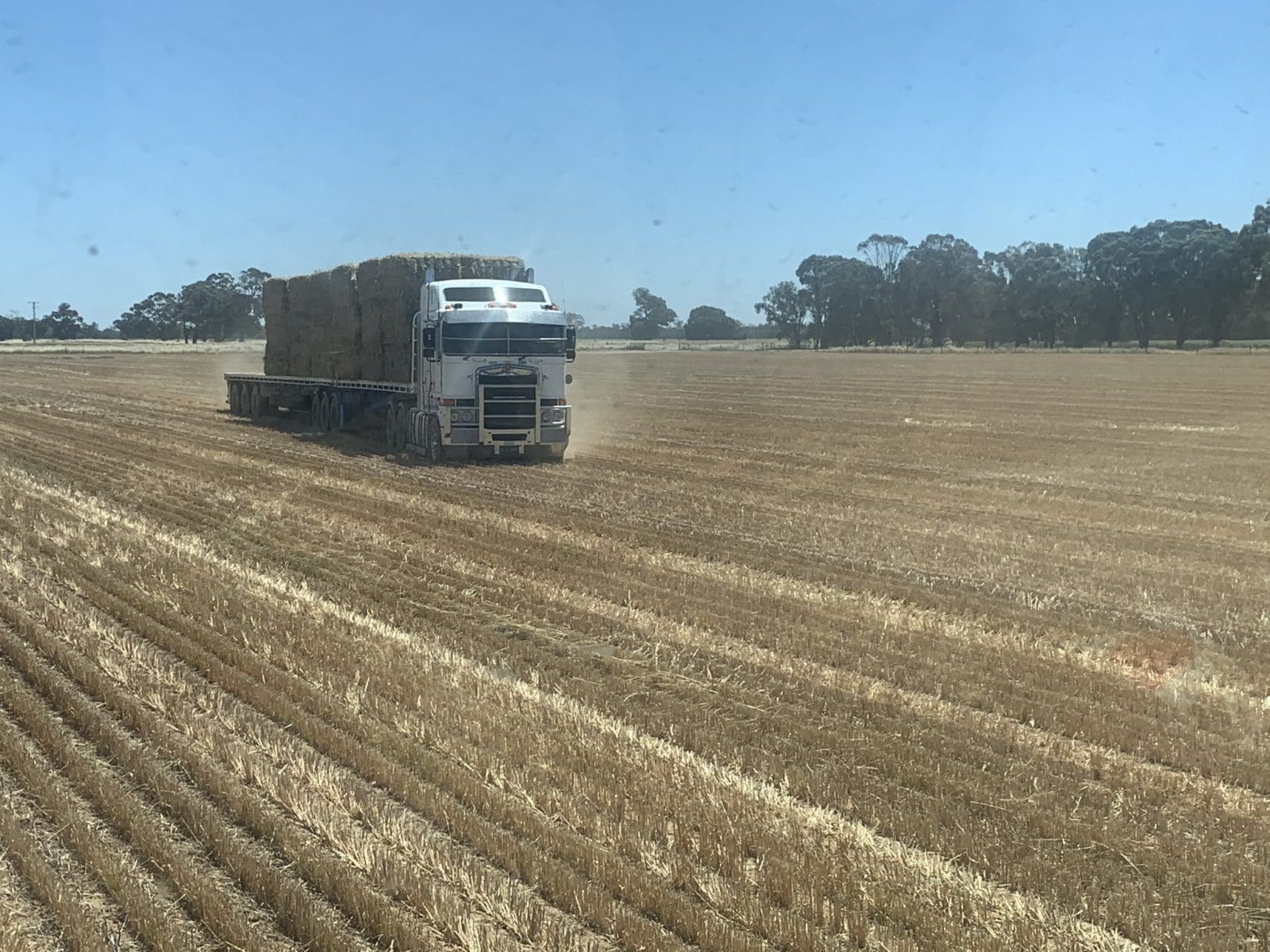
Oaten hay leaves a paddock in Victoria’s Wimmera region in 2020. File photo: Luke Milgate
GROWERS impacted by low rainfall across Australia’s south-east are being reminded to think about
herbicide residues when planting back to oats this season.
Trengove Consulting independent agronomist Ben Smith said that in some situations, there has not been enough moisture in soil profiles to break down last year’s herbicide applications.
“It’s a real watch-out for oat hay growers this season, particularly in South Australia and the western half of Victoria, where there will be areas that haven’t had effective rainfall or enough time pass to deal with herbicide residues,” Mr Smith said.
“There are certain products that require a set amount of effective rainfall over a defined timeframe before you can safely resow to oats.
“While the rainfall and interval amounts are on product labels, the important thing here is ‘effective rainfall’ and not just whether you’ve had the total amount listed.”
For rainfall to be effective, it must penetrate into the soil, keeping it moist to a depth of around 5-10cm for a reasonable period.
“It needs to persist long enough for the soil microbes to have the time to break down any herbicide residues.
“While you may have actually received the rainfall volume on the label, if it all came down in heavy falls that ran off, or there were long gaps between events, you may not have had enough moisture in the soil long enough to degrade all your residues.”
Actives and products growers should be particularly aware of include:.
- Pre-emergent treatment Overwatch (bixlozone, Group 13) has a replanting interval of nine months and 250mm interim rainfall for oats;
- Sakura and Mateno Complete (pyroxasulfone, Group 15) have a 21-month and 550mm rainfall plantback to oats;
- In-season application of imidazolinone (Group 2) products, like Intervix and Intercept, need to be considered as there may not have been enough rain to satisfy plantback requirements; newer IMI-tolerant oat varieties Kingbale and Archer can provide residue protection;
- Reflex (fomesafen, Group 14), Callisto (mesotrione, Group 27) and Talinor (bicyclopyrone, Group 27 and bromoxynil, Group 6) all have nine-month, 250mm plantback restrictions which may not have been met; and
- Some sulfonylureas (Group 2) also pose a risk. This includes products with metsulfuron (Ally, Stinger, Trounce), chlorsulfuron (Glean), triasulfuron (Logran) and mesosulfuron (Atlantis).
Mr Smith said soil pH was an important consideration with group 2s.
“The key with all of these is that even if the rainfall volume is achieved, there still has to be adequate soil microbial activity for residue degradation.
“If that hasn’t happened, you run the risk of your oats being adversely affected, leading to issues such as poor crop performance with yellowing, stunted growth, reduced vigour, bleaching, and root-pruning being potential symptoms.
“The impact can be severe.”
Mr Smith suggested growers checked their application and rainfall records carefully, and talked to their agronomist.
“You can also do a bioassay on the crop or a soil sample to compare with a non-treated paddock to check for any residues present.
“It has been an incredibly dry year, and in some areas, the rain that has been received was patchy to say the least, so it really pays to double check your paddock situation before planting your oats.”
Source: Australian Exporters Company, which represents Australia’s major export oaten hay processors.